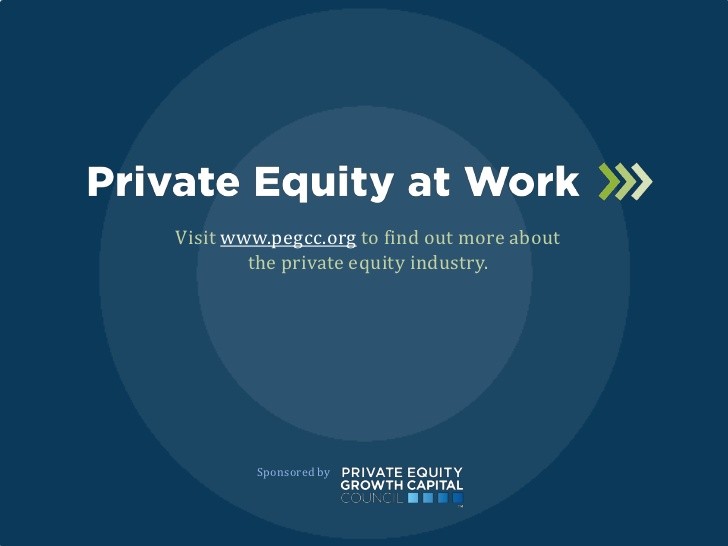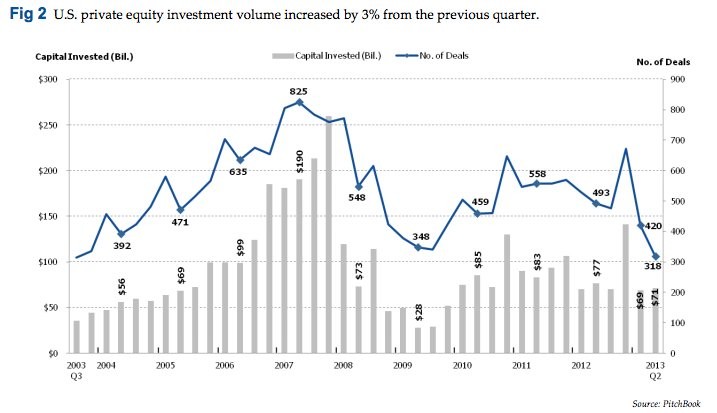What is Private Equity Learn More About Private Equity from PEGCC Private Investors Education
Post on: 26 Июнь, 2015 No Comment

By definition, private equity is an asset class comprised of equity securities – or stocks – in companies that are not publicly traded.
The private equity investment model is simple:
Private equity firms buy other companies that have significant potential for growth. Over time, the private equity firm invests capital, time and effort to improve the company’s performance and increase its overall value.
Eventually, the firm will sell the company – hopefully at a profit – and undertake a new investment.
Strengthening businesses is the cornerstone to the private equity model. By growing companies at home and abroad, private equity provides a vital source of capital investment to the U.S. and global economies.
Private Equity at Work
The private equity and growth capital industry drives growth. competitiveness and value creation across the U.S. and global economies by investing in companies, improving their performance and positioning them for long-term success.
Private equity and growth capital firms invest in and often acquire companies (referred to as portfolio companies) that have significant potential for growth. They can be public or private and, in many cases, are undervalued or underperforming businesses.
Private equity firms invest capital, as well as time, energy, expertise, and talent to improve company performance. They are involved in the management and operations of their portfolio companies, helping to implement investment and growth strategies, operational improvements and innovations, and management and personnel changes that lead to stronger and more competitive companies.
Without the short-term, public pressures of quarterly earnings calls, private equity owners and the managers of their portfolio companies can hone in on the strategies and investment decisions that are required to improve a company’s long-term prospects.
Companies that benefit from private equity and growth capital investments span all industries and sectors, including technology, healthcare, manufacturing, retail, entertainment, financial services, hospitality and energy, among others.
The Private Equity Investment Model
At its core, the private equity model is simple:
- Private equity firms establish funds that raise capital from sophisticated investors, who are referred to as limited partners, or LPs. The funds are structured as long-term investment vehicles, often requiring limited partner investors to commit their capital for 10 to 12 years.
- Private equity firms serve as the general partners (or GPs) of their funds. They invest their own capital along with the capital raised from investors and make all investment decisions for the fund. The funds buy companies that the GPs believe could achieve greater growth and profitability with the right infusion of talent and investment. Their approach is to put in place the strategies and management teams capable of improving the company’s performance.
- Private equity funds typically invest in companies for three to seven years before selling them, hoping to realize a gain on the sale as a result of the increased value they have created during their period of ownership.

When private equity funds sell investments for a profit, limited partner investors receive the overwhelming majority of the gains. In fact, the PE partners cannot obtain carried interest payments on an investment until they return to LP investors their principal plus a hurdle rate (generally 8 to 10 percent) of partnership profits. After LP investors have received their principal plus a hurdle rate payment on their investment, 80 percent of the remaining profits are allocated to the LP investors and 20 percent to the GPs. The GPs share of gains is commonly referred to as a carried interest .
If there are no profits, PE partners not only receive no carried interest, they lose their own equity investment, and in certain cases may have to payback earlier carried interest payments received on other fund investments that were successful, a process known as clawback.
The size of the gain is proportionate to the increase in value the private equity fund has created over the holding period.
The Private Equity Advantage
The entire PE investment model depends upon improving the acquired business and increasing its long-term value. If the private equity firm fails to do that, it loses its own money, its investors lose their money, and its ability to raise future funds is undermined.
Given these strong incentives, how does private equity create value?
The essence of private equity is the alignment of the interests and incentives of management with that of the owners. In a public company, the owners — shareholders — are largely separate from the management of a company. Private equity eliminates this disconnect. PE firms often require company management to invest their own money into the company so they have a vested interest in its success.
This provides a sharper focus on how capital is allocated across the business — without the constant pressure of delivering quarterly results to public shareholders. Everyone has a shared objective: grow the company’s value. Thus, they can make business decisions solely focused on that goal, rather than satisfying external constituencies, such as analysts, traders, stock brokers, and the media.
By better aligning the interests of owners and managers and by instituting a nimbler operating style that fosters greater innovation and long-term investment, private equity owners are leaders in spurring improved productivity and competitiveness, driving growth and creating value.














